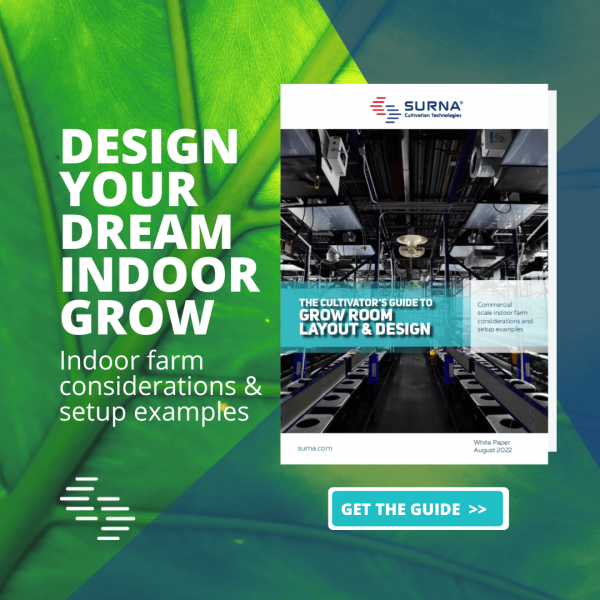As the holiday season kicks into high gear, we’d like to remind all of the growers out there to keep a mindful eye on your plants as personnel availability waivers to accommodate vacation schedules. Depending on the grow medium being used, plants can become stressed in a matter of hours if mistakes are made in the feeding schedule or if the electrical breaker controlling lighting or other vital equipment is tripped. This stressing can have dire consequences when growing for a large scale production facility, including: stunted and/or delayed plant growth, disease/pest infestation, and killing the plants entirely.
These issues can become systemic if left unchecked and will reduce yield and increase personnel needs in order to recover. On a less severe note, early detection of plants that have been infected with disease or insects can be the difference between a few lost plants and the loss of an entire harvest. Small problems can escalate quickly in confined growing environments and the best way to prevent this is to have a solid process for verifying that each plant receives maintenance on a regular schedule.
If you know your strains, a quick glance at the plant canopy from the center of the room is a good technique to determine the health of the room overall, however it doesn’t provide the information needed to fully declare a room healthy, as much of the vital information can only be observed by inspecting individual plants.
Instead, get close and personal with each and every plant. This may be difficult for larger operations to achieve logistically as observing each plant for pests, disease, and nutrient deficiency/toxicity takes time; even for experienced growers. In this case, a schedule and procedure should be defined for batch testing within rooms that hold a large plant count. This technique can, at least, minimize the risk of systemic damage and keep the grower ahead of any sweeping plant feeding issues. Regardless, when observing plants for health related issues, be sure to check the leaf coloring and shape for problem signs as they are the primary indicators of many problems that can manifest during any stage of plant growth. At a minimum, plants should be observed for the following:
Leaf structure
Are leaves pointing up, down, curling, wilting, drying out or mutating?
Leaf and stem color
Are leaves turning yellow?
Do the leaves show consistent coloring, or are they developing spots or necrosis?
Are the stems changing color?
Root color
Observe the root system if possible. Are the roots white, or are they turning brown?
Pest infestation
Are you regularly finding bugs in your sticky traps?
Can you find any spider mite webbing or damage?
Are gnats flying within the canopy?
The equipment in every room should be verified daily for correct operation as well. Simple activities like making sure that the lights turn on/off in each room on time can drastically affect a room’s potential yield. Measuring equipment such as light meters, TDS/EC meters, pH meters, environmental sensors (temperature, humidity, CO2) should be checked frequently as well so optimum conditions can be met. Doing these quick checks can alert the facility manager of potential issues with the heating/cooling system, lighting systems, or water source, which could save the grow major setbacks and save the operation a lot of financial frustration.
By defining a preventative maintenance plan for your plants, and sticking to it, any grow operation can maximize their opportunities for success. Each and every grow room expends a significant amount of energy in the raising and flowering of their plants, which means that if yield suffers for any reason not only are you losing money by having less product, but you also lose money in utility and labor costs. Grows that lock down their quality control systems and produce their yield quota consistently are the companies that will survive as the market pricing per gram of final product becomes more competitive. It’s easy to neglect the small things once the flower rooms progress through week 3, but making sure that you’re covering all of your bases and giving as much attention to your plants as possible will make a large difference in the quality of your final product.

